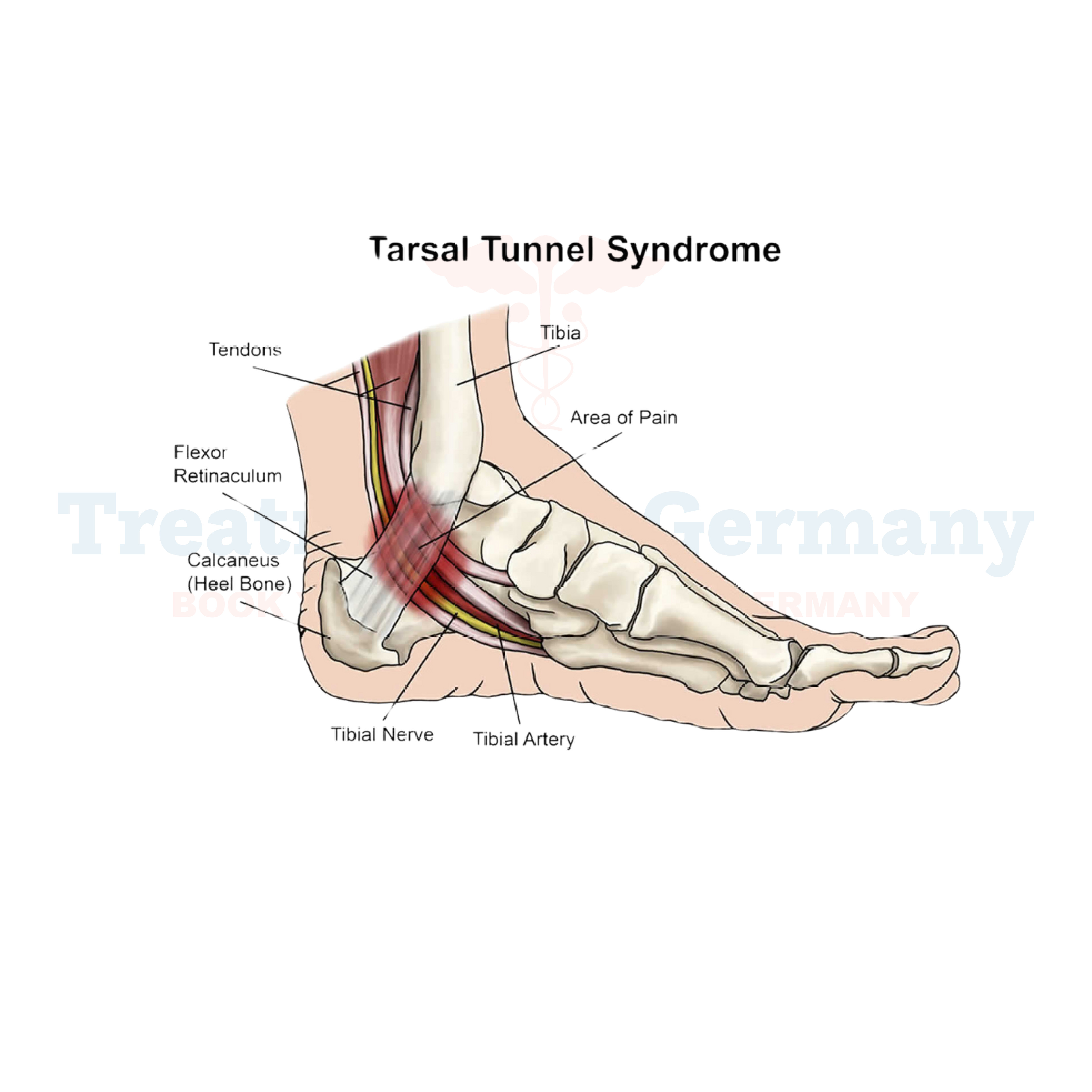What is Tarsal Tunnel Syndrome:
Tarsal Tunnel Syndrome (TTS) is a condition that affects the foot, specifically the tarsal tunnel—a narrow space on the inner side of the ankle beneath the ankle bones.
This syndrome is caused by compression of the tibial nerve or its branches as they pass through the tarsal tunnel. Similar to carpal tunnel syndrome in the wrist, TTS involves pressure on the nerve, leading to various symptoms.
Side effects of Tarsal Tunnel Syndrome:
The symptoms of Tarsal Tunnel Syndrome can vary from person to person, but commonly include:
How is Tarsal Tunnel Syndrome diagnosed?:
Diagnosing Tarsal Tunnel Syndrome typically involves a thorough medical history review and a physical examination by a healthcare professional.
Additionally, diagnostic tests such as nerve conduction studies or electromyography (EMG) may be ordered to assess nerve function and rule out other conditions that mimic TTS.
Imaging studies like MRI or ultrasound may also be utilized to visualize the structures within the tarsal tunnel and identify any abnormalities contributing to nerve compression.
Potential treatments of Tarsal Tunnel Syndrome:
1. Conservative therapies: Initially, non-surgical treatments may be recommended, including rest, activity modification, orthotic devices, and supportive footwear to alleviate pressure on the nerve. Physical therapy exercises focusing on stretching and strengthening the foot muscles may also be prescribed.
2. Medications: Over-the-counter pain relievers or anti-inflammatory drugs may help manage pain and reduce inflammation associated with TTS. In some cases, corticosteroid injections into the tarsal tunnel can provide temporary relief of symptoms.
3. Surgical intervention: If conservative measures fail to provide adequate relief, surgery may be considered to decompress the tibial nerve and release the structures causing compression within the tarsal tunnel. This procedure aims to relieve pressure on the nerve and restore normal function.
4. Alternative therapies: Some patients may find relief from complementary and alternative therapies such as acupuncture, chiropractic care, or massage therapy. However, the effectiveness of these treatments for Tarsal Tunnel Syndrome may vary from person to person.
👉 Contact us for further information and receive acomplimentary consultation.

.webp)
.webp)
 (1).webp)
 (1).webp)

.webp)
.webp)
 (1).webp)
 (1).webp)
